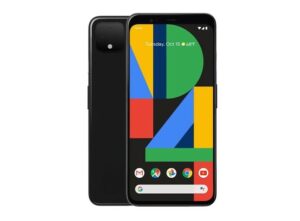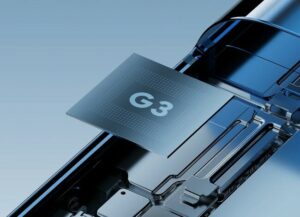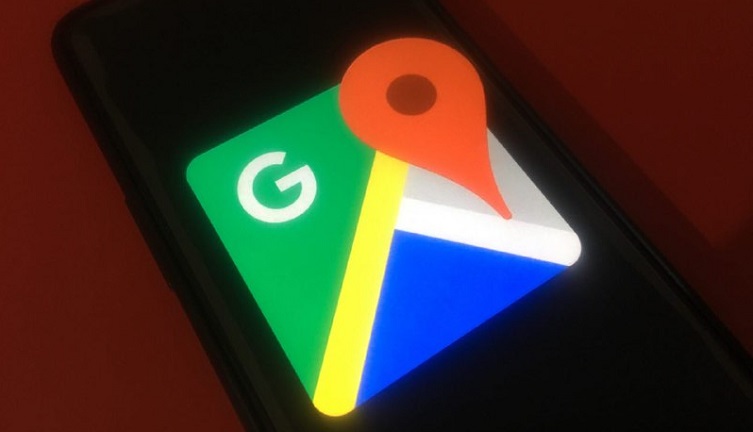Face unlock (or Face ID) is one of the most useful features that have come to smartphones. However, not all face unlock systems are equally secure, and there are even cases where they may be so basic that it is best to avoid using them. Currently, there are two types of these systems in smartphones: 2D (they only use a front camera) and 3D (they use a front camera plus other sensors for greater precision).
That said, the Google Pixel 8 series includes a 2D face unlock system secure enough to be used even in payments and banking apps, but only relying on a front camera (in terms of hardware). Of course, this may raise some skepticism among some users, but if you want to know how secure the Pixel 8 series face unlock system is, read on.
There was a Google Pixel with 3D face unlock in the past
For those who don’t remember, Google had already introduced 3D face unlock to the Pixel line a few years ago. This was introduced with the Pixel 4 and 4 XL, which included a ‘real-time infrared (IR) active stereo depth sensor’ (called ‘uDepth‘) alongside its front camera. This system offered precise facial shape recognition even when there was not enough light.

The feature was highly rated at the time, but Google decided to do without it and return to the traditional face unlock. From Pixel 5 series onwards, Pixel phones only include a front camera sensor. The company maintained support for facial unlocking, but using traditional ‘2D’ recognition with improved performance through its advanced image technologies.
However, although theoretically it was more secure than traditional 2D face unlock, it was still not secure enough to approve its use in payments and banking apps. But, that has changed with the new Google Pixel 8 series, whose face unlock can be used for these types of apps. That said, what has made it possible?
Here’s why Google Pixel 8 ‘2D face unlock’ supports payments and banking apps
To start, Google defines 3 levels of facial recognition on Android, depending on how secure they are.
- Class 1 (formerly ‘Convenience’)
- Class 2 (formerly ‘Weak’)
- Class 3 (formerly ‘Strong’)
‘Class 3’ is the level necessary for a facial recognition system to be reliable and secure enough for sensitive apps (mainly payments and banking). Now, the Google Pixel 8 series offers a Class 3 face unlock system, even using a single front camera. In comparison, the previous generation (Pixel 7 series) only achieved the ‘Class 1’ certification.
From the developer’s point of view, they are unable to integrate the BiometricPrompt API to banking or payment apps if the device’s Face Unlock system is not Class 3. This is because lower security levels could be fooled even with a photo of your face, which is a potential serious safety risk.
This new advancement seems quite impressive, since it places 2D facial recognition systems at similar security levels to 3D systems. The repercussions in the industry could be quite positive, as if this is possible, more companies could offer something similar without having to use big notches or multiple punch-holes in the screen.
According to Google, this is possible thanks to their latest machine learning advancements. Although this statement may sound a bit vague, the company also offers in its blogs (via Mishaal Rahman) a more detailed description of what it means to achieve the Class 3 level for a face unlock system on Android.
How secure is a Class 3 2D face unlock?
Google uses 3 main parameters to determine that an Android face unlock system meets the Class 3 requirements:
- Spoof Acceptance Rate (SAR): between 0-7%
- False Acceptance Rate (FAR): 1/50k
- False Rejection Rate (FRR): 10
That is, the Google Pixel 8 series face unlock system, according to Google’s testing, meets those requirements. Therefore, it becomes secure enough to use it in payments and banking apps.
Security level classifications are provided by the Biometric Security Program, a process that involves the review of a Biometric Compliance Report (BCR) sent by the party interested in receiving the certification. Those who review the BCR are the Android team, which works separately from the Pixel team, and carries out multiple tests to determine the current level of security met by the evaluated face unlock system.
Although the Pixel 8 series face unlock only uses a front-facing camera, AI processing improvements in the new Tensor G3 chipset are also involved here. Therefore, it is highly unlikely that ‘face unlock’ support in payments and banking apps will come to the Pixel 7 series.
In fact, according to the company, the Tensor G3 chipset includes a TPU that offers up to twice the power in terms of machine learning processing compared to the original Tensor present on the Pixel 6 series.
Conclusion
To the delight of all Pixel phone fans, the latest Google Pixel 8 series includes a facial recognition system compatible with payments and banking apps. Although it relies on a single front-facing camera, the company’s machine learning advancements and the Tensor G3 chip TPU (twice as powerful as the original Google Tensor TPU) allow it to achieve the ‘Class 3’ security certification necessary for this.
Let’s hope that this new advance will allow more manufacturers to include a much safer 2D facial unlocking biometric security system in the future, without the need to include big notches or more punch-holes on the screen.
Featured Image: Google
PiunikaWeb started as purely an investigative tech journalism website with main focus on ‘breaking’ or ‘exclusive’ news. In no time, our stories got picked up by the likes of Forbes, Foxnews, Gizmodo, TechCrunch, Engadget, The Verge, Macrumors, and many others. Want to know more about us? Head here.



